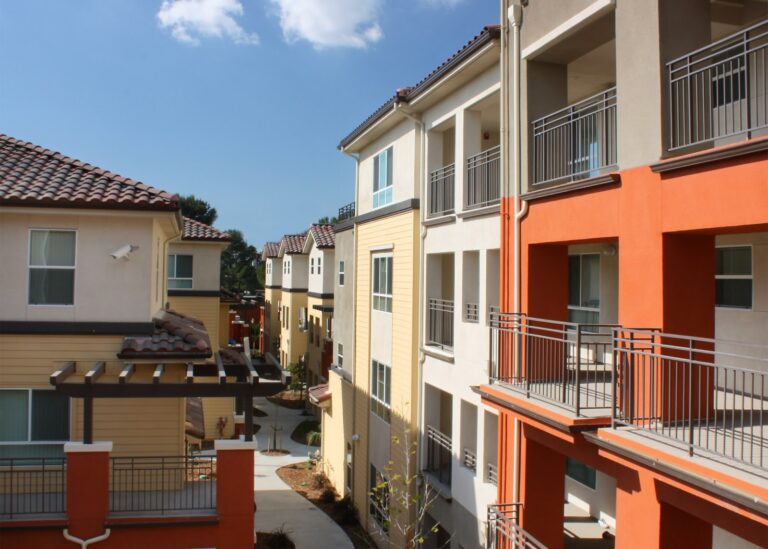Physical Address
304 North Cardinal St.
Dorchester Center, MA 02124
Physical Address
304 North Cardinal St.
Dorchester Center, MA 02124
Some people accept the idea that restrictive land use policy is just as bad as all the research suggests, but persist in supporting the status quo. They argue that if a community chooses to regulate its built environment, that choice should be respected as having moral weight because it’s the outcome of a democratic process. This argument, though, is as logically confused as it is normatively problematic. And in the following few lines, I intend to demonstrate exactly why. No decision making process is value neutral. Whatever way we choose to go about collective decision making, we will always privilege certain voices over others. Institutions beget outcomes and the internal logic of our institutions will always favor some outcomes (and therefore voices) over others. The same individuals with the same preferences asked to make the same decisions through different procedures will produce wildly different outcomes. Imagine a U.S. Presidential election based on the popular vote or representation in the U.S. Senate proportional to state population and you should begin to see how the public will is as much a product of procedure as it is aggregated individual preference. Taking the Bay Area as a land use specific example, our system heavily favors the voices of incumbent homeowners to the detriment of everyone else. Land use decisions take place at the municipal level which–given the fact that we have 101 different municipalities–is a hyper local affair. When a new development is proposed, it only takes a handful of angry neighbors to impact decision making. Were land use set at a higher level of government, the typical number of people that get angry over an individual project would be far less effective at killing new housing. Fifty angry homeowners might matter to the Palo Alto City Council, but they’d be quite a […]
This post was originally published at mises.org and reposted under a creative commons license. It’s no secret that in coastal cities — plus some interior cities like Denver — rents and home prices are up significantly since 2009. In many areas, prices are above what they were at the peak of the last housing bubble. Year-over-year rent growth hits more than 10 percent in some places, while wages, needless to say, are hardly growing so fast. Lower-income workers and younger workers are the ones hit the hardest. As a result of high housing costs, many so-called millennials are electing to simply live with their parents, and one Los Angeles study concluded that 42 percent of so-called millennials are living with their parents. Numbers were similar among metros in the northeast United States, as well. Why Housing Costs Are So High? It’s impossible to say that any one reason is responsible for most or all of the relentless rising in home prices and rents in many areas. Certainly, a major factor behind growth in home prices is asset price inflation fueled by inflationary monetary policy. As the money supply increases, certain assets will see increased demand among those who benefit from money-supply growth. These inflationary policies reward those who already own assets (i.e., current homeowners) at the expense of first-time homebuyers and renters who are locked out of homeownership by home price inflation. Not surprisingly, we’ve seen the homeownership rate fall to 50-year lows in recent years. But there is also a much more basic reason for rising housing prices: there’s not enough supply where it’s needed most. Much of the time, high housing costs come down to a very simple equation: rising demand coupled with stagnant supply leads to higher prices. In other words, if the population (and household formation) is […]
Caos Planejado, in conjunction with Editora BEI/ArqFuturo, recently published A Guide to Urban Development (Guia de Gestão Urbana) by Anthony Ling. The book offers best practices for urban design and although it was written for a Brazilian audience, many of its recommendations have universal applicability. For the time being, the book is only available in Portuguese, but after giving it a read through, I decided it deserved an english language review all the same. The following are some of the key ideas and recommendations. I hope you enjoy. GGU sets the stage with a broad overview of the challenges facing Brazilian cities. Rapid urbanization has put pressure on housing prices in the highest productivity areas of the fastest growing cities and car centric transportation systems are unable to scale along with the pace of urban growth. After setting the stage, GGU splits into two sections. The first makes recommendations for the regulation of private spaces, the second for the development and administration of public areas. Reforming Regulation Section one will be familiar territory for any regular MU reader. GGU advocates for letting uses intermingle wherever individuals think is best. Criticism of minimum parking requirements gets its own chapter. And there’s a section a piece dedicated to streamlining permitting processes and abolishing height limits. One interesting idea is a proposal to let developers pay municipalities for the right to reduce FAR restrictions. This would allow a wider range of uses to be priced into property values and create the institutional incentives to gradually allow more intensive use of land over time. Meeting People Where They Are Particular to the Brazilian experience is a section dedicated to formalizing informal settlements, or favelas. These communities are found in every major urban center in the country and often face persistent, intergenerational poverty along with […]
Marcos Paulo Schlickmann, a transportation specialist and collaborator at Caos Planejado, our Brazilian partner website, recently interviewed Professor Donald Shoup, who answered questions about private and public parking issues. Private parking Marcos Paulo Schlickmann: What is your opinion on legal parking minimums? Donald Shoup: In The High Cost of Free Parking, which the American Planning Association published in 2005, I argued that minimum parking requirements subsidize cars, increase traffic congestion, pollute the air, encourage sprawl, increase housing costs, degrade urban design, prevent walkability, damage the economy, and penalize poor people. Since then, to my knowledge, no member of the planning profession has argued that parking requirements do not cause these harmful effects. Instead, a flood of recent research has shown they do cause these harmful effects. Parking requirements in zoning ordinances are poisoning our cities with too much parking. Minimum parking requirements are a fertility drug for cars. MPS: What would happen if we were to abandon parking minimums? DS: Reform is difficult because parking requirements don’t exist without a reason. If on-street parking is free, removing off-street parking requirements will overcrowd the on-street parking and everyone will complain. Therefore, to distill 800 pages of The High Cost of Free Parking into three bullet points, I recommend three parking reforms that can improve cities, the economy, and the environment: Remove off-street parking requirements. Developers and businesses can then decide how many parking spaces to provide for their customers. Charge the right prices for on-street parking. The right prices are the lowest prices that will leave one or two open spaces on each block, so there will be no parking shortages. Prices will balance the demand and supply for on-street parking spaces. Spend the parking revenue to improve public services on the metered streets. If everybody sees their meter money at work, the new public services can […]

I just finished reading Richard Florida’s new book, The New Urban Crisis. Florida writes that part of this “crisis” is the exploding cost of housing in some prosperous cities. Does that make him a market urbanist? Yes, and no. On the one hand, Florida criticizes existing zoning laws and the NIMBYs who support them. He suggests that these policies not only raise housing prices, but by doing so harm the economy as a whole. For example, he writes that if “everyone who wanted to work in San Francisco could afford to live there, the city would see a 500 percent increase in jobs… On a national basis, [similar results] would add up to an annual wage increase of $8775 for the average worker, adding 13.5 percent to America’s GNP – a total gain of nearly $2 trillion” (p 27). On the other hand, Florida is not ready to endorse the idea that “we can make our cities more affordable… simply by getting rid of existing land use restrictions” because “the high cost of land in superstar neighborhoods makes it very hard if not impossible, for the private market to create affordable housing in their vicinity. Combine the high costs of land with the high costs of high-rise construction and the result is more high-end luxury housing.” (p. 28). I don’t find his point persuasive, for a variety of reasons. First, as I have written elsewhere, land prices are often quite volatile. Second, the overwhelming majority of any region’s housing is not particularly new; even in high-growth Houston, only 2 percent of housing units were built after 2010. Thus, new market-rate housing is likely to affect rents by affecting the price of older housing, rather than by bringing new cheap units into the market. Florida also writes that “too much density can […]

Inclusionary zoning allows a few people to live in desirable, new construction buildings for much less than market rates. But it also carries with it a slew of perverse consequences. Because it’s a tax on construction, it reduces supply. Inclusionary zoning also leads developers to build higher-end buildings than they would otherwise, further squeezing out lower- and middle-income tenants. While inclusionary zoning makes life easier for a few middle- and high-income residents lucky enough to secure below market-rate units in expensive cities, it also contributes to the regulatory mess that constrains housing supply in general. This in turn drives up the cost of housing. The effects of these supply constraints fall hardest on low-income residents who can least afford artificially high housing costs. By placing further constraints on housing markets, inclusionary zoning makes it so that resources dedicated to providing housing for the truly needy don’t go as far as they could in a less regulated market. Subsidies to middle-income residents come with the unfortunate side effect of making it more difficult for non-profits and government programs to make housing accessible to the truly needy. Recently I presented on a panel at Chapman University on the future of housing in Orange County. Our panel highlighted the tensions between housing programs designed to help low-income and homeless households and those designed to help middle-income households. While my talk focused on regulatory barriers that make housing unaffordable for people across the income spectrum, Maria Cabildo — a former non-profit developer for low-income housing — talked about her experiences building housing for the homeless and very-low-income families. Maria pointed out that market-rate housing is too expensive for minimum wage earners in every single county in the country. In expensive markets, policies designed to subsidize housing for middle-income people drives prices even farther out of reach for low-income […]
Matthew Yglesias has a group of tweets that begin with this: Someone needs to give me an Oscar one of these years so I can subject America to a tedious discussion of land use regulation. — Matthew Yglesias (@mattyglesias) February 27, 2017 “In the movies, there is no minimum lot size or maximum lot occupancy; we fill provide as much or as little parking as we want.” — Matthew Yglesias (@mattyglesias) February 27, 2017 “Fences is a powerful reminder that single-family zoning is not enough to make the American dream a reality.” — Matthew Yglesias (@mattyglesias) February 27, 2017

As a Market Urbanism reader, you are hopefully fluent in the problems of exclusionary zoning. If you’re new to the term, there are some good pieces on the topic here and here. Basically: exclusionary zoning is the use of zoning to price people out of a community. The classic example is minimum lot sizes or minimum unit sizes: cities only zone parcels big enough to ensure low-income families cannot afford the housing. When subsidies for affordable housing require specific unit attributes, like reduced parking ratios, a community can simply require parking ratios above that threshold (although states can move swiftly to stamp out such practices). States have also responded to exclusionary zoning practices with a wide array of policy interventions known collectively as “anti-snob laws.” One key component of California’s anti-exclusionary efforts is called the Regional Housing Needs Allocation (RHNA). The law requires each jurisdiction in the state to produce a Land Inventory (or Adequate Sites Inventory, or Sites Inventory, or Buildable Land Inventory) that demonstrates the jurisdiction possesses space to accommodate anticipated housing needs at adequate densities. Read “adequate densities” as dense enough to produce affordable units. Scott Wiener, the state senator representing San Francisco, is pushing to give the RHNA some real teeth. The most contentious component of the process is the definition of “need” for each jurisdiction. The state calculates anticipated need based on population and jobs projections for each region. Regional councils of government (COGs) are then empowered to distribute the regional need to each jurisdiction within that region. Need is quantified in terms of units, and these needed units are further categorized into four groups: units affordable to Very Low Income, Low Income, Moderate Income, and Above Moderate Income households. Regional agencies had some flexibility in making these allocations in the past. Thanks to SB 375, which passed in […]
Davis, CA, is a small college town a twenty minutes’ drive outside of Sacramento (on a good day). It has a vacancy rate on par with Manhattan despite being surrounded by flat, developable farmland. Some critics attribute this absurd vacancy rate to Measure R, a ballot initiative approved by Davis residents in 2000 that requires a public vote on any peripheral development. Since it’s passage, three developments went up for a vote, and all of them failed. The group that defends Measure R is known as the “Citizens for Responsible Planning” or CRP. Throughout various development battles, CRP has strategically utilized air quality concerns to push new development further away from existing neighborhoods. They opposed the most recent Measure R development, Nishi Gateway, because toxic air quality made the site virtually uninhabitable, at least in their minds! In fairness: the site is sandwiched between railroad tracks and a major highway, Interstate 80. So it’s a real concern. But fast-forward just six months later, and CRP is demanding the University of California, Davis, the area’s largest employer, dramatically expand its on-campus housing options for students, staff, and faculty. In an effort to appear proactive, they produce a map of optimal sites to locate student housing on the UC Davis Campus. One of the sites they select is adjacent to the Nishi parcel they so aggressively opposed development on just six months earlier. Another parcel they suggest building housing on is also sandwiched between the same railroad tracks and highway that Nishi sat between, but just a couple miles further south (and further from existing neighborhoods). You can see all of this in a map provided below, where the Nishi site they killed at the ballot is marked in red and the sites they claim to support student housing on are colored in blue: […]

President Trump has threatened to withhold all federal funds from so-called sanctuary cities–municipal governments that do not enlist their police departments in the president’s mass deportation plan. If he makes good on his threat, cities that insist on maintaining their sanctuary status can offset revenue losses with two policies: liberalizing land-use regulation and depoliticizing public land sales. It’s unclear exactly how much money each city would lose by maintaining its sanctuary status, but New York City, to name one example, relies on federal funding for 10% of its budget, according to state comptroller estimates. A sudden drop of that magnitude would devastate many jurisdictions, and Miami-Dade County has already caved. However, a handful of cities with high rents and very restrictive land-use regulations could dramatically increase property tax revenue and the value of city-owned real estate through liberalization. Millions of Americans would love to live in cities like New York, Los Angeles, San Francisco, Seattle, San Jose, Austin, Portland, and Denver, but legal restrictions on what can be built limit the number of housing units available and increase the cost of each unit. Some estimates have found that regulation alone accounts for fifty percent of the cost of housing in San Francisco. At the same time, land-use regulation has the opposite effect on the price of land itself. A plot of land with limited legal potential for development is worth much less than a plot a developer could use to build a large, lucrative building. Economist Keith Ihlanfeldt has found that the decrease in land values more than offsets the increase in home prices—meaning some cities are decreasing potential revenues by restricting development. San Francisco has large neighborhoods of single-family homes where rent levels would sustain large apartment towers. The drastic mismatch between what is currently allowed and what consumers demand suggests that land values would skyrocket if restrictions were relaxed. […]